A new exhibition explores the impact of the built environment on the natural world, writes Nicholas de Klerk
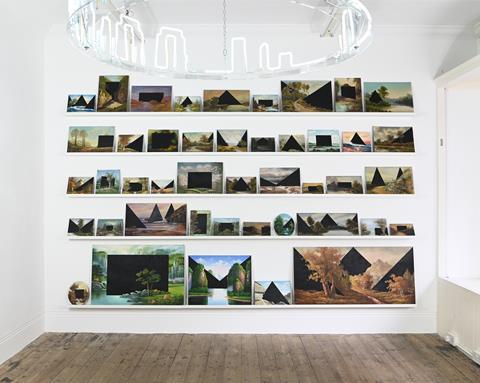
Sam Jacob’s new exhibition at Betts Project situates itself in the context of the increasingly fraught relationship between architecture and nature. This is not to say that this is exactly a new debate, but perhaps one which now has a more urgent currency given the growing existential threat of the climate crisis and awareness of construction’s contribution to it. While the critical appraisal of architecture’s relationship to the environment is undoubtedly improving on a technocratic level, the question of why and how we approach building in this context is perhaps less well understood.
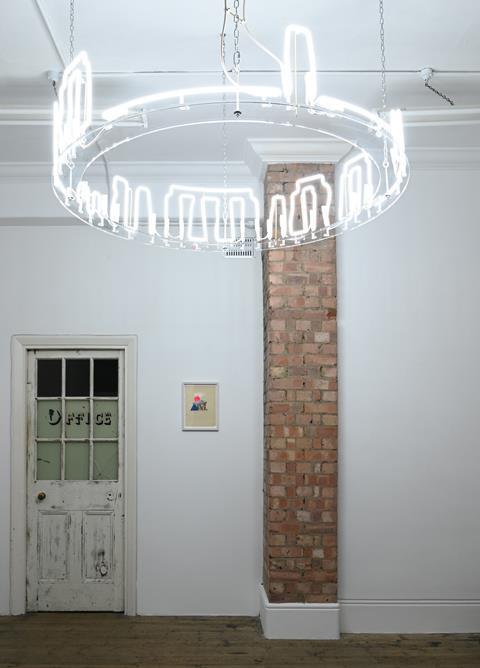
The exhibition is comprised of four main elements. As you enter the gallery on Central Street in Islington, you are confronted with a neon henge – A Perfect Zero – suspended from the gallery’s ceiling. On your right is Against Nature, an installation of forty four unframed found landscape paintings, each of which has been overpainted by a dense, black, platonic shape. On your left is Ritual Litter, which comprises a series of vintage prints of stone circles collaged with coloured shapes. Slouching alongside the gallery’s office door is Soft Stone, the Swindon Stone reimagined as a beanbag, completing four different examinations of one of the earliest expressions of architecture in nature.
The most recent of these works, and for me the most compelling, is Against Nature. Jacob has sourced a collection of paintings, technically described as ‘found’ on eBay and elsewhere. These range in age and type from vintage landscape paintings to more contemporary amateur works which fall within the ‘Sunday painters’ genre. They range in technical skill and quality and are all presented without frames in their as-found condition complete with dust and damage.
The black forms are derived in shape and proportion from the paintings themselves and insert an unknown quality into something that, on the surface at least, appears knowable. Jacob makes the point that all landscapes are constructed, deliberate fictions and his overpainting draws attention to this fact by inserting another fiction into what has now become a slightly more obvious, albeit ambiguous, construction.
The unknowable nature of the forms or voids which Jacob has introduced into the paintings, along with the destruction (of both the painting and the actual ‘landscape’) that would accompany the creation of such an almost implausible object, introduces an unsettling element into the composition. I wonder if we genuinely stopped to consider the degree of material extraction, energy consumption, carbon release, destruction and waste involved with a typical building project, whether it might generate a comparable sense of anxiety to the point where it would make us think again, perhaps radically, about where and how we build.
It’s worth ending with a point about the gallery itself. Betts Project was founded by Marie Coulon almost a decade ago and specialises in showing architectural illustrations, photography and models. Over that period the gallery has hosted selling exhibitions by the likes of Tony Fretton, Pier Vittorio Aureli, Denise Scott Brown and Office KGDVS.
Without wishing to come across as a complete luddite, in a time where architectural illustration is trivialised on an almost daily basis by AI and machine learning, and misappropriated in the culture wars which we can’t seem to escape, it is a privilege to be able to visit a space where the critical function of drawing, of representation, still has currency. As ever, it is the thinking behind a drawing that matters, even more than the drawing itself, and Coulon and her gallery deserve credit, and support, for showcasing it.
Postscript
Sam Jacob: Against Nature is at Betts Project until 15th April 2023
Nicholas de Klerk is the founding director of Translation Architecture











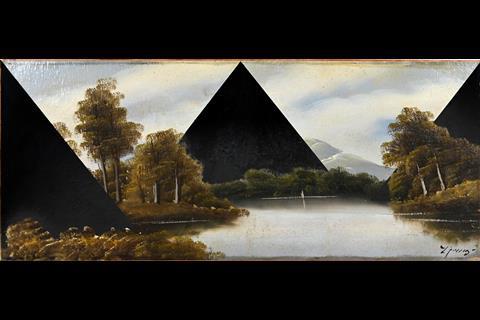

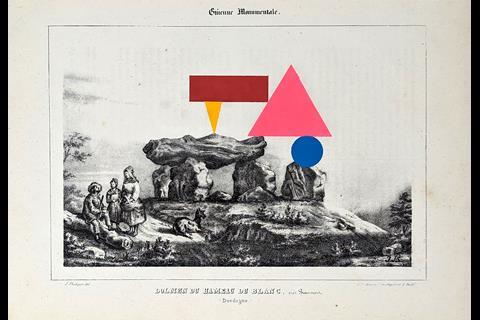
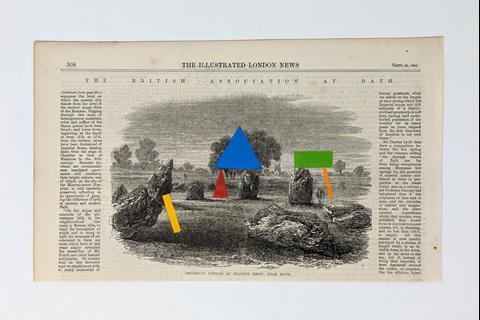
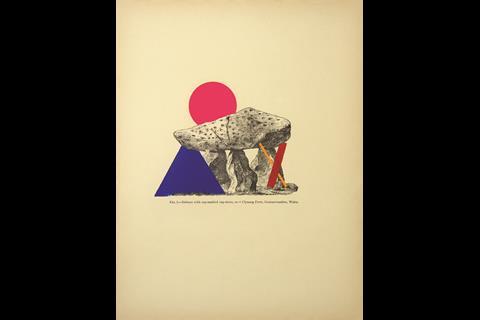
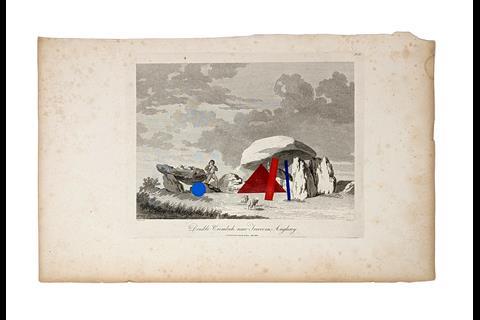







No comments yet